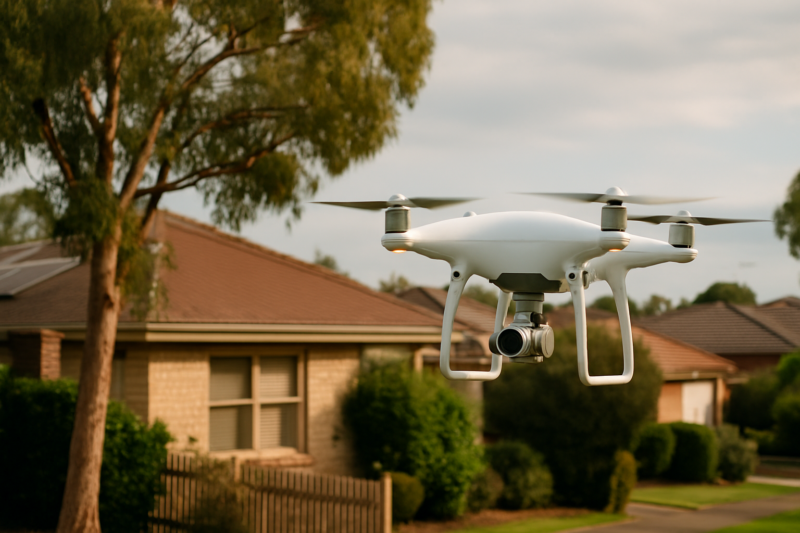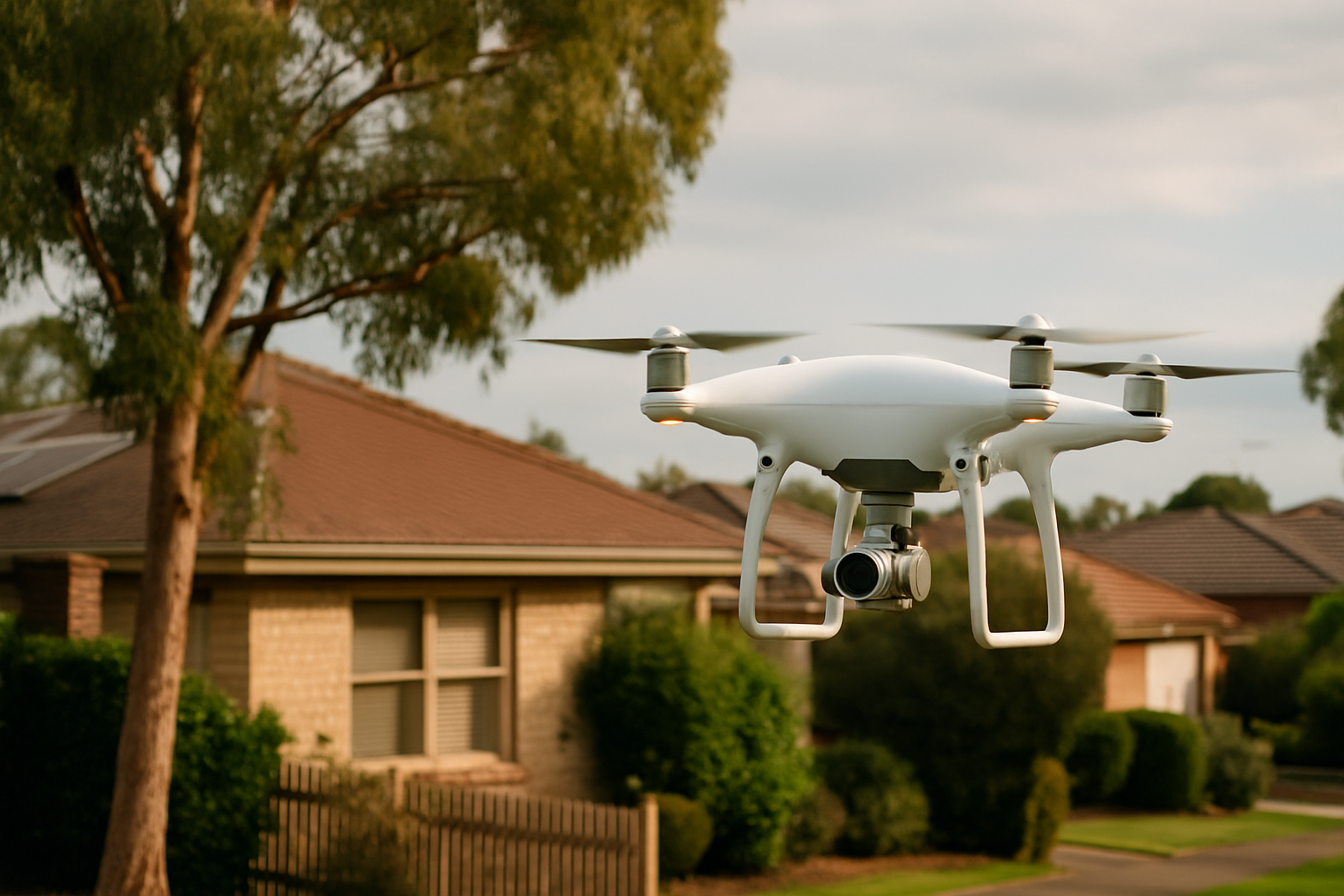
Key takeaways
Insurers are using drones to inspect roofs, gutters & trees—without stepping onto your property.
If a home becomes too costly (or impossible) to insure, its value can plummet.
High-risk zones (floods, bushfires, storms) are most exposed.
Regular maintenance isn’t just cosmetic anymore—it protects your insurance & property value.
Insurability is becoming as important as location when buying property.
Look up at the gum trees in your backyard and imagine something looking back, not a neighbour, not a cockatoo, but your insurer.
Increasingly in Australia, that’s not science fiction.
Our insurers are quietly embracing drone technology and aerial imaging to assess properties, spot risks, and in some cases, decide whether you can even get cover.
And as every homeowner knows, insurance is not just about peace of mind, it’s a prerequisite for keeping your mortgage, protecting your wealth, and ultimately influencing the value of your property.

The rise of “eyes in the sky”
Insurers have been steadily deploying drones since around 2016 when IAG used them to assess bushfire damage along the Great Ocean Road.
What started as a way to safely inspect disaster-hit areas has evolved into a much broader risk-assessment tool.
Today, high-resolution aerial imagery, 3D modelling, and AI analysis can reveal cracked tiles, clogged gutters, or overhanging trees, without anyone setting foot on your property.
That data goes straight to insurers, who then decide whether you’re high-risk, whether your premiums need to rise, or even if your policy should be renewed at all.
While insurers argue this improves efficiency, speeds up claims, and reduces fraud, it’s also creating a new layer of scrutiny that homeowners can’t ignore.
Why this matters for property values
If a property becomes too risky, or too expensive to insure, obviously its resale market diminishes and it's value can tumble.
This is already a reality in high-risk parts of the country: bushfire-prone regions, flood plains, and coastal zones battered by storms.
Here’s the flow-on effect:
-
Insurance availability – Without cover, lenders will usually refuse mortgages. That shrinks the buyer pool so the property immediately.
-
Insurance affordability – Rising premiums eat into household budgets or investor cash flow. When premiums climb, buyers discount the price they’re willing to pay.
-
Market bifurcation – Well-maintained, insurable properties retain demand. Homes flagged as risky face longer selling times and lower offers.
The Climate Council has already warned that as many as 1 in 25 homes could be “effectively uninsurable” in high-risk pockets by 2030.
Whether or not the numbers play out exactly, the trajectory is clear: insurability is becoming a key driver of price in the Australian market.
Maintenance is no longer optional, it’s financial strategy
Loose roof tiles, overgrown trees, blocked gutters, once minor maintenance issues, are now being captured in high-definition from above.
And insurers are acting on it. That means keeping your property in top condition is no longer about presentation, it’s about financial viability.
For homeowners and investors, this translates into a new kind of discipline:
-
Proactive maintenance – Regular roof and gutter inspections, tree trimming, and drainage management are now essential.
-
Documentation – Keep date-stamped photos and receipts. If an insurer flags a problem, you’ll need proof of repairs.
-
Dispute readiness – If you face a premium hike or non-renewal, be prepared to challenge it with evidence.
The need for transparency in Australia
One of the emerging challenges is transparency.
Many Australians don’t know their properties are being photographed, let alone that those images may determine their insurability.
Unlike in other countries, which are moving towards laws requiring insurers to notify policyholders and provide copies of aerial images, we have no such protections here yet.
That raises an important question: Should homeowners have the right to see and contest the aerial data used to make critical decisions about their financial security?
In my view, absolutely. Without transparency, homeowners are left vulnerable to decisions based on outdated or misleading imagery.
What investors should do now
For property investors, this isn’t just a side issue, it’s central to protecting wealth.
Here’s a practical playbook:
-
Check insurability before buying – Get indicative insurance quotes during due diligence, particularly in high-risk areas.
-
Audit your portfolio – Review current insurance terms, premiums, and exclusions across your holdings.
-
Invest in resilience – Bushfire shutters, flood mitigation, or ember-proof vents may not just protect your property—they may reduce premiums or keep cover in place.
-
Keep your own data – Commission aerial or roof inspections yourself and keep records. If insurers rely on aerial images, you should too.
The bottom line
Like it or not, the “eyes in the sky” are here to stay. Drones and aerial imagery will only become more common in how insurers assess risk and set premiums.
For Australian homeowners and investors, ignoring this trend isn’t an option.
Insurability is becoming as important as location, land size, or floor plan in determining property value.
Stay proactive, keep your property in insurable condition, and treat aerial surveillance as part of the new reality of owning property in Australia.














